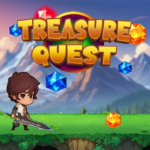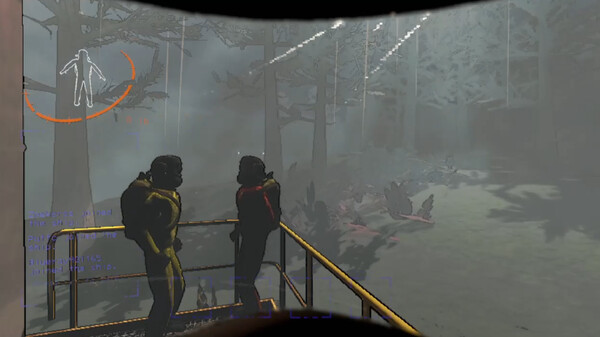The Legend of Zelda – A Timeless Adventure That Shaped Gaming History
Introduction: A Legendary Journey Begins
The Legend of Zelda is not just a game—it’s a cultural icon and a pillar of modern game design. Created by Nintendo and first released in 1986, the franchise has grown into a beloved saga, known for its blend of adventure, puzzle-solving, exploration, and combat. Whether it’s the pixelated charm of the original or the vast open world of Breath of the Wild, the core spirit of discovery, bravery, and myth has remained intact. It’s a game that transcends generations, captivating both longtime fans and new adventurers alike.
1. Visual Style and World Design
The visual evolution of The Legend of Zelda spans from retro 8-bit sprites to breathtaking 3D landscapes. Each game in the series has its own unique artistic identity—from the cel-shaded whimsy of Wind Waker to the gritty realism of Twilight Princess.
The design philosophy focuses on inviting exploration. From serene forests to volcanic peaks and ancient ruins, every environment feels handcrafted to reward curiosity. In Breath of the Wild, this reached its peak with a seamless, open-world Hyrule that feels alive and boundless.
2. Iconic Characters and Lore
At the heart of every Zelda game is the trifecta of characters: Link, the silent hero; Princess Zelda, the wise leader; and Ganon, the embodiment of evil. Each iteration reimagines their roles, but the themes of courage, wisdom, and power remain constant.
The lore is rich with mythical backstory. From the creation of Hyrule by the goddesses to the cyclical battle between good and evil, Zelda builds a deep narrative universe that unfolds piece by piece across different timelines and incarnations.
3. Core Gameplay Mechanics
Zelda’s gameplay blends combat, exploration, and puzzle-solving into a single, immersive experience. Players fight enemies with swords, bows, bombs, and shields while navigating dungeons filled with environmental puzzles and hidden secrets.
The game is known for its metroidvania-style progression: acquiring new tools like the Hookshot, Boomerang, or Master Sword unlocks previously inaccessible areas. This creates a satisfying loop of discovery and empowerment.
4. Dungeons and Boss Fights
Each dungeon in Zelda is a self-contained world of traps, keys, puzzles, and epic showdowns. They often introduce a unique theme or mechanic, such as manipulating time, light, or gravity.
Boss fights are not just about brute force—they’re puzzle-based battles where players must identify patterns and use specific items to expose weak points. The blend of strategy and action makes these encounters memorable.
5. Music and Sound Design
Few franchises have such iconic music. From the Overworld Theme to Zelda’s Lullaby, the soundtrack of Zelda is instantly recognizable. Composers like Koji Kondo have crafted melodies that evoke emotion, mystery, and heroism.
Sound design extends to gameplay—chimes signal secret discoveries, enemy growls alert danger, and puzzle-solving tones provide gratification, creating an auditory world as immersive as the visual one.
6. Puzzles and Problem Solving
Puzzles are a cornerstone of the Zelda experience. These range from block-pushing and torch-lighting to more complex systems involving water levels, mirrors, and time manipulation.
What sets Zelda apart is how these puzzles are intuitively designed to teach without tutorials. Players learn by observing, experimenting, and adapting, making each “aha!” moment feel earned.
7. Exploration and Freedom
Especially in titles like Breath of the Wild, exploration is completely open-ended. Players can climb any surface, glide across valleys, and discover shrines, hidden weapons, or side quests organically.
The world is filled with secrets—from Korok seeds to ancient ruins, the incentive to stray from the main path is always high. Freedom and player agency are fundamental to Zelda’s identity.
8. Evolution Through the Series
The franchise has evolved drastically across decades. Early titles like A Link to the Past laid the blueprint for top-down adventures. Ocarina of Time revolutionized 3D gaming with Z-targeting and cinematic storytelling.
With Breath of the Wild, Nintendo broke from tradition and embraced sandbox design, physics-based gameplay, and a non-linear structure that reshaped open-world design for the industry.
9. Side Quests and Replayability
Zelda games are packed with side quests, mini-games, and collectibles that deepen the world and reward exploration. From fishing competitions to trading sequences and shooting galleries, there’s always something else to do.
Games like Majora’s Mask add replay value by using a time-rewind mechanic, encouraging multiple approaches. Collecting heart pieces, bottle upgrades, or optional gear adds depth for completionists.
10. Cultural Impact and Legacy
Zelda has left an indelible mark on gaming. It has inspired countless titles—from Elden Ring to Genshin Impact—and continues to shape the future of interactive storytelling and design.
From cosplay to music concerts, speedruns to fan art, Zelda has fostered a passionate global community. It's not just a game—it's a legend that keeps evolving, capturing the hearts of gamers across every generation.
Conclusion: Why The Legend of Zelda Endures
The Legend of Zelda is a masterclass in timeless game design. It balances action, mystery, and emotional storytelling with seamless gameplay. Whether you're solving ancient puzzles in forgotten temples or battling monsters under a blood moon, Zelda offers a sense of wonder and heroism that few games can match.































